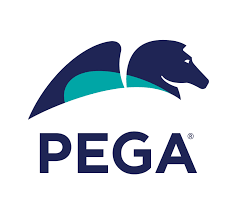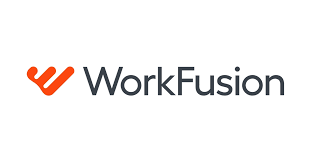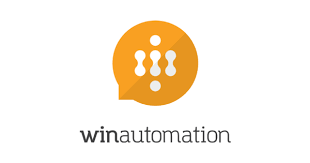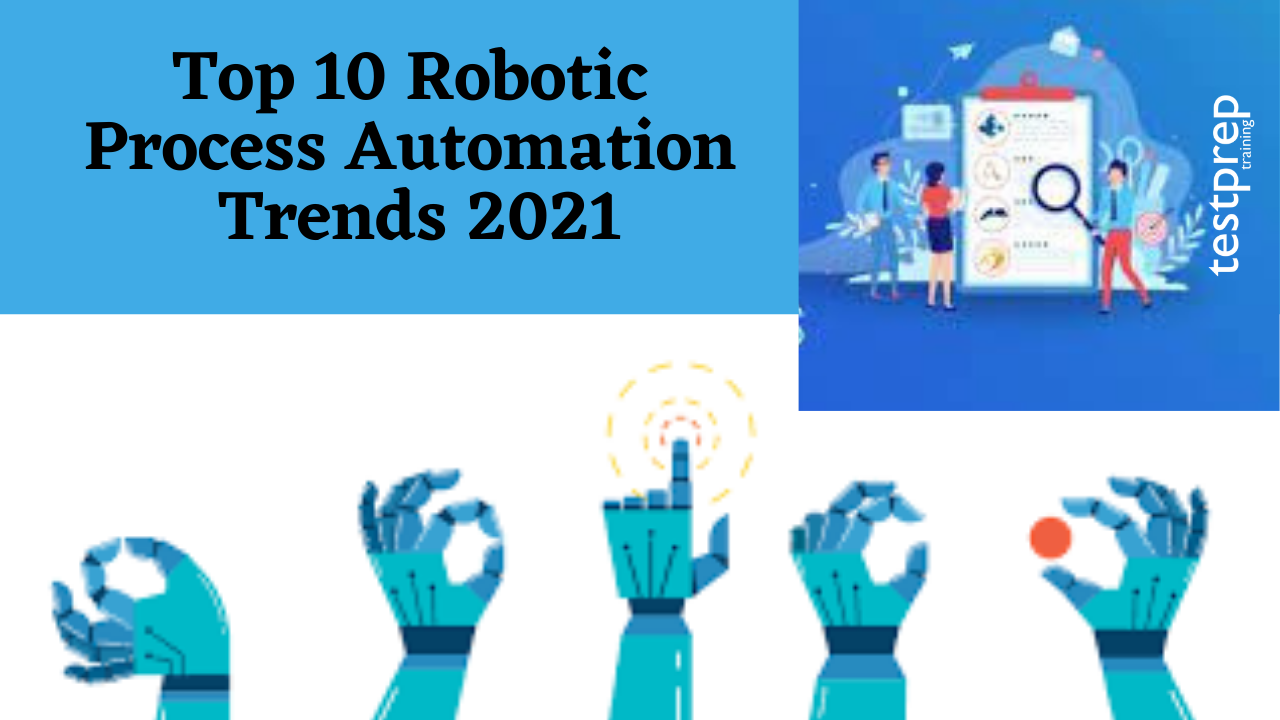Robotic Process Automation is a software technology that makes it simple to create, deploy, and manage software robots that mimic human movements while dealing with digital systems and software. Software robots, like people, can understand what’s on a screen, type the correct keystrokes, traverse systems, recognize and retrieve data, and do a variety of predefined tasks. Software robots, on the other hand, can do it faster and more reliably than people, without the need to stand up and stretch or take a break for coffee.
About Robotic Process Automation
Robotic process automation (RPA) is a sort of business process automation technology that automates business operations using software robots (bots) or artificial intelligence (AI)/digital workforce. Software robotics is another name for it (not to be confused with robot software).
In traditional workflow automation systems, a software developer writes a list of steps to automate a task and connects to the back-end system via internal application programming interfaces (APIs) or a dedicated scripting language.
RPA systems, on the other hand, create an action list by watching a user execute a task in the application’s graphical user interface (GUI), and then automate those tasks directly in the GUI. This can lessen the barrier to using automation in goods that don’t have APIs for this purpose otherwise.
What are the business benefits of RPA?
Organizations become more lucrative, flexible, and responsive as a result of robotic process automation. It also improves employee satisfaction, engagement, and productivity by eliminating time-consuming tasks from their daily schedules.RPA is non-intrusive and may be swiftly implemented to accelerate digital transformation. It’s also useful for automating tasks with legacy systems that lack APIs, VDIs, or database access.
Advantages of Robot Process Automation
Code-Free: RPA does not necessitate any coding or programming skills. Modern RPA technologies are utilised to automate applications in any department where clerical labour is performed across a company. As a result, employees just need to be instructed on how RPA works and can easily construct bots using a GUI (Graphical User Interface) and several straightforward wizards. It has an advantage over traditional automation methods in that it allows for faster delivery of business applications. Furthermore, this platform lowers the cost of setup, training, and deployment.
Non-Disruptive: The dangerous or complex transformation process, which hinders large businesses from rebuilding, replacing, or enhancing the operating system, is one of the key challenges that IT deployment faces. The transformation procedure with RPA, on the other hand, is quite basic and straightforward. RPA software robots access the end-user system in the same way that humans do, according to existing security, quality, and data integrity standards. These software robots also avoid any type of disruption and maintain functioning and security.
User-Friendly: RPA does not necessitate specialized training, such as coding, programming, or extensive IT experience. RPA software is simple to use, comprehend, and implement. RPA products use a built-in screen recorder component to capture mouse clicks and keystrokes, allowing users to develop bots fast and easily. The Task Editor feature in some RPA software allows you to manually design and edit bots.
Rich-Analytical Suite: The RPA program provides an analytical suite that assesses the performance of robot workflows. The RPA analytical suite also aids in the monitoring and management of automated functions via a centralized portal that can be accessed from any location. It provides basic statistics on robots, workflows, and other topics. The analytical suite’s analysis aids users in tracking operations and identifying difficulties. There is no requirement for integration because everything is built-in and ready to use right away.
Disadvantages of Robot Process Automation
Initial Investment Costs: RPA is still in its early stages of development, hence it may bring issues that lead to unintended consequences. As a result, deciding whether to invest in robotic automation or wait for its expansion is difficult for businesses. When considering the deployment of this technology, a detailed business case must be prepared; otherwise, it will be useless if the returns are only minor, which may not be worth the risk.
Process Selection: Tasks that are repetitious, rule-based, and do not involve human judgment are always the best. Non-standard procedures are difficult to automate because therefore necessitate human engagement to accomplish. As a result, RPA can only automate a limited number of jobs.
Potential Job Losses: It is anticipated that if a robot can work faster and at a more constant rate, there will be no need for human input. It is the primary concern of employees, and it poses a significant danger to the job market. This viewpoint, however, is incorrect. Amazon is a fantastic example of this constraint. The employment rate has risen fast over a period in which the number of robots has climbed from 1000 to over 50000.
Robot Process Automation Tools
RPA tools are pieces of software that allow users to automate a variety of operations. Data input, data extraction, report generation, and other similar operations are common in most enterprises. The personnel conducts these operations manually on the program. With the help of bots, such monotonous chores can be readily mechanized. The RPA Tool is a piece of software that uses bots to automate tasks.
Top 10 RPA tools –
UiPath

UiPath is a robotic process automation platform for end-to-end automation on a big scale. UiPath software delivers solutions for businesses to automate repetitive office tasks for rapid business transformation. It employs a range of strategies to automate time-consuming tasks.
The rapidity with which digitalization can be deployed is its biggest advantage. However, one of the difficulties with digitization is that it necessitates a diverse set of tools, which necessitate individuals with a diverse skill set. However, finding a workforce with a diversified skill set is difficult. To deal with these issues, the entire IT industry has been striving for a dependable, fast, intelligent, and long-lasting solution. This demand is met by the UI path.
Features
- It offers cloud environments, virtual computers, and terminal services as well as other hosting choices.
- It can run a wide range of web and desktop programmes.
- To operate bots, it has an auto-login capability.
- It features a scraping solution that is highly accurate and works with.Net, Java, Flash, PDF, Legacy, and SAP.
Blue Prism

Blue Prism is a UK-based software development company specialising on robotic process automation. The firm creates software robots that assist in the automation of clerical back-office tasks in the same way that humans do. Robotic Process Automation was invented by Blue Prism (RPA). This figure alone illustrates the company’s dominance in the development of RPA software.
By automating manual, rule-based, repetitive back-office procedures and boosting accuracy through the development of a “Digital Workforce,” Blue Prism software allows businesses to be more agile and cost-effective. To automate each stage of the business processes, the RPA Blue Prism tool provides a flow chart-like designer with a drag-and-drop capability.
Features:
- It is platform-agnostic, meaning it can be used on any system.
- Load balancing, data encryption, and end-to-end auditing are just a few of the features. As a result, every modification is scrutinise.
- Blue Prism can also automate Mainframe, Java, Windows programmes, and even web-based applications.
- All major cloud systems, such as Microsoft Azure and Amazon AWS, are supported. As a result, users may manage the majority of their chores from a central location.
Automation Anywhere

Automation Anywhere is a web-based management system that allows businesses to govern and manage end-to-end automated business processes. It enables the automation of a wide range of tasks, ranging from simple Windows settings to advanced networking and remote database processes.
Features:
- Firstly, It allows for easy connection with a variety of systems.
- Secondly, It uses authentication, encryption, and credentials to give bank-level security.
- It distributes duties over numerous computers and automates complex and time-consuming activities quickly.
- It provides script-free automation.
Pega

Pega is a robotic process automation (RPA) solution that may be use to automate repetitive operations in a workflow. It adds the ability to automate operations using current apps’ user interfaces. By automating user activities, it is possible to speed up manual tasks.
All usage scenarios are supported by the Pegasystems automation framework tool. Pega unifies architecture with a business rule management system and a decision management mechanism based on predictive analytics.
Features:
- It offers a cloud-based service and aids in the distribution of solutions to clients.
- Secondly, It collects data on the desktop.
- Thirdly, It collects information on how the job is complete.
- Last but not least, It doesn’t use a database to store execution data.
- Everything is saved in your memory.
WorkFusion

WorkFusion is a crowd computing platform that is available as a service (SaaS). This RPA software helps you manage crowd-sourced workers from all over the world by automating the process of data stream monitoring.
Features:
- By simply pressing a button, this Robotic Process Automation software automates activities.
- Deploy as many bots as you need to run at the same time for enterprise-scale automation.
- Collaborate with a group of people from separate workstations.
- Automate your entire staff.
Jacada

Jacada is another popular RPA solution. It aids desktop automation by allowing businesses to automate time-consuming, error-prone, and repetitive processes. It aids in the improvement of accuracy, productivity, and customer happiness. This tool is commonly use to create customer service centers and communication centers.
Features:
- Firstly, It has hybrid RPA capabilities, which means it can handle both attended and unattended bots.
- Secondly, It offers unrivalled flexibility in the handling of automated procedures.
- Next, It decreases the average handling time for businesses.
- It aids in the improvement of first-call resolution (or instant resolution).
WinAutomation

WinAutomation is a Windows-based desktop automation programme that facilitates the creation of software robots. It is powerful, resilient, and simple to use. It comes with enterprise-level security and controls. This programme can fill up web forms, retrieve data, and move data from one application to another.
Features:
- It allows for simple integration with popular third-party applications.
- During testing, it allows for parallel execution.
- Image and optical character recognition are there.
- Bot development only takes a small amount of coding.
NICE Systems

The NICE system, sometimes known as NEVA, is a sophisticated RPA technology (Nice Employee Virtual Attendant). It works with cloud-based and on-premise business software. Using this technology, a range of tasks can be completed without the need for human intervention. It aids employees in completing repetitious jobs.
With the use of high-level analytics of structured and unstructured data, it enables organisations to draw accurate inferences.
Features:
- It’s perfect for banking, finance, and human resources, among other things.
- It improves client satisfaction as well as productivity.
- It automates routine tasks and ensures that regulations are followed.
Contextor

Contextor is a robotic automation process’ integrate development environment. It provides a comprehensive customer view, online assistance, and data sharing across two or more apps.
Features:
- Firstly, It uses a drag-and-drop and point-and-click approach to configure robots.
- Secondly, It can keep track of the processes running on the workstation.
- It has the ability to locate and recognise the target apps.
- It has the ability to maintain existing projects as well as add new features.
Redwood Software

The Redwood RPA tool allows you to develop unattended robotic processes that are simple to scale and deploy. It’s one of the greatest RPA solutions because it has a lot of plug-and-play robots that can connect to most conventional applications right away.
Features:
- Simple and sophisticated jobs can be automated.
- Offer a one-of-a-kind network of services that can be leveraged to instantly automate any procedure.
- Landscape with three tiers, automated promotion, and audit trail
- All robotic and human interactions are automatically recorded, providing a complete picture of the entire operation.
- You can use it to run, clone, and edit bots.


